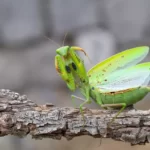Jalapeños are one of the most popular chili peppers around the globe, renowned for their perfect balance of heat and flavor. In this article, we delve into the spiciness of jalapeños, exploring how they measure up on the heat scale and the various factors that influence their piquancy.
The Scoville Heat Scale
The Scoville Heat Scale is the primary tool for measuring the heat of chili peppers. Developed by Wilbur Scoville, this scale assigns a numerical value to the spiciness of peppers based on their capsaicin content, the chemical compound responsible for the fiery sensation. Jalapeños typically range from 2,500 to 8,000 Scoville Heat Units (SHU), placing them in the moderate range of spiciness. Compared to milder peppers like bell peppers (0 SHU) and hotter varieties like habaneros (100,000 – 350,000 SHU), jalapeños offer a heat level that is perceivable yet not overwhelming for most palates.
Factors Contributing to the Spiciness of Jalapeños
The spiciness of jalapeños is primarily attributed to capsaicin. However, several other factors play a role in determining their heat level:
Genetic Factors and Breeding
Varieties of jalapeños have been bred for different purposes, some emphasizing flavor over heat and vice versa. The genetic makeup of the jalapeño plant significantly influences its capsaicin content.
Environmental Influences
The environment in which jalapeños are grown can affect their heat. Factors such as soil type, temperature, and moisture levels have been known to impact capsaicin levels in the peppers. Generally, stress conditions like high heat and limited water can lead to spicier jalapeños.
Ripeness
As jalapeños mature, their heat level changes. Typically, a jalapeño pepper becomes spicier as it ripens. Green jalapeños are younger and tend to be milder, while older, red jalapeños are usually hotter.
Variability in Jalapeño Heat
Jalapeños can exhibit a significant range in spiciness, even within the same variety or plant. This variability is part of what makes cooking with jalapeños both exciting and unpredictable.
Impact of Ripeness on Spiciness
The stage of ripeness greatly influences a jalapeño’s heat. Generally, as jalapeños mature and change color from green to red, they become spicier. The development of capsaicin increases throughout the maturation process, leading to a more intense heat in fully ripened peppers.
Preparation and Cooking Methods
The way jalapeños are prepared and cooked can also alter their perceived heat. Removing the seeds and inner membranes, where a large concentration of capsaicin resides, can significantly reduce their spiciness. Cooking methods like roasting or grilling might mellow the heat, while pickling can maintain or even enhance it.
Identifying the Heat Level of Jalapeños
Determining the exact spiciness of a jalapeño before tasting it can be challenging, but there are some indicators:
Visual Cues
Some jalapeños develop small white lines or striations, often referred to as ‘stress marks,’ on their skin. These peppers are typically spicier, as the marks indicate the plant underwent some stress, which tends to increase capsaicin levels.
Testing Spiciness
Given the unpredictability of jalapeño heat, a practical approach is to taste a small piece before adding it to a dish. This allows you to gauge its spiciness and adjust your recipe accordingly.
Culinary Uses of Jalapeños
Jalapeños are incredibly versatile in the kitchen. Their moderate heat level makes them suitable for a variety of dishes across different cuisines. They are commonly used in salsas, sauces, stuffed as poppers, or sliced as toppings for pizzas and tacos. The spiciness of jalapeños can add depth to a dish without overpowering other flavors.
For those sensitive to spicy foods, there are ways to mitigate the heat of jalapeños in cooking. Removing the seeds and membranes, as mentioned earlier, is an effective method. Additionally, pairing jalapeños with dairy products like cheese or yogurt can help neutralize their heat.
Conclusion
Jalapeños are a dynamic and essential ingredient in many culinary traditions, known for adding just the right amount of heat to a wide array of dishes. Understanding the spiciness of jalapeños is key to using them effectively in cooking. They typically rank in the moderate range on the Scoville scale but can vary in heat due to factors like ripeness, environmental conditions, and genetic variety.
When using jalapeños in cooking, it’s important to consider their variability in spiciness. The presence of stress marks can be a visual clue to hotter peppers, but the most reliable method is to taste a small piece before incorporating it into a dish. For those who prefer milder flavors, removing the seeds and membranes or cooking the jalapeños can reduce their heat.
Jalapeños can enhance the flavor profile of numerous dishes, from traditional Mexican salsas to contemporary fusion cuisines. Their versatility allows them to be a staple in kitchens around the world. Whether you’re crafting a spicy salsa, roasting them for a smoky flavor, or pickling them for an extra zing, jalapeños offer a unique blend of heat and taste that can elevate your culinary creations.
In conclusion, whether you are a seasoned chef or a home cook, experimenting with jalapeños can add an exciting dimension to your cooking. By understanding and respecting their spiciness, you can harness the full potential of these vibrant peppers. So, go ahead and explore the diverse world of jalapeños, and let their unique flavor and heat inspire your next kitchen adventure.



